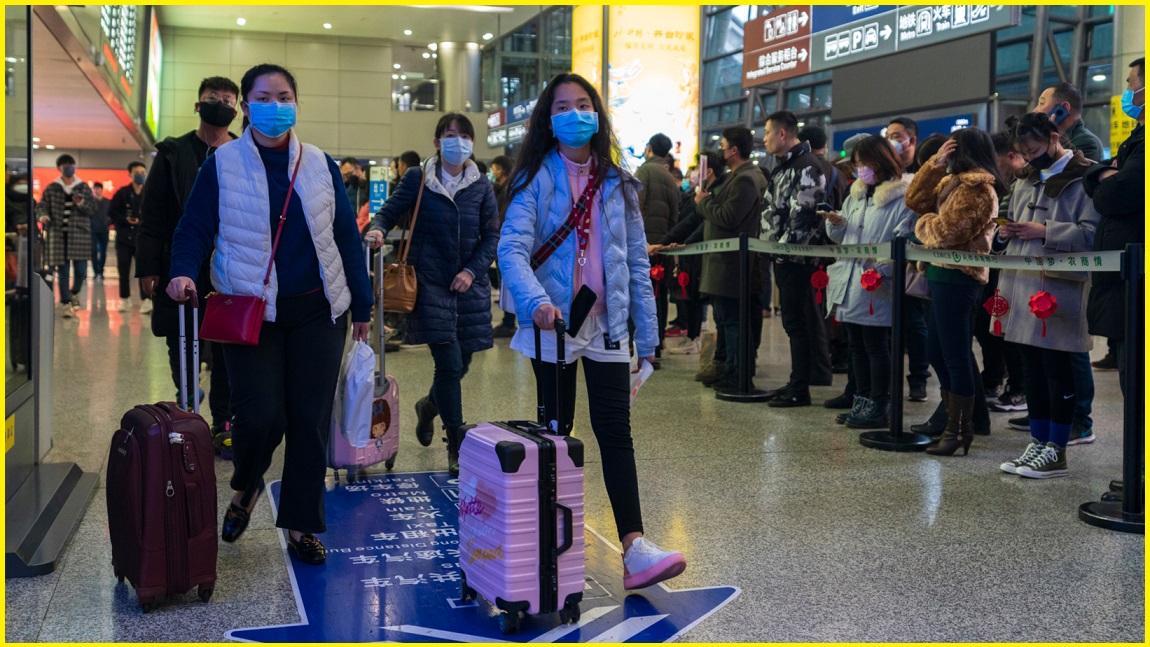It has caused the cancellation of global conferences, threatened iPhone shortages due to the shutdown of factories, spawned a new wave of scams and stranded thousands of people on a cruise liner.
But the COVID-19 coronavirus is even creating panic amongst privacy advocates after seemingly providing a rationale for China’s storied mass surveillance system.
Responding to concerns about the rapid spread of the disease, the Chinese government this month released a mobile app called Close Contact Detector (CCD), which allows users to register their phone and personal details to find out if they have been in close contact with anybody confirmed or suspected of having the virus.
The National Health Commission (NHC) – which jointly developed the app with the China Electronics Technology Group Corporation (CETC) and General Office of the State Council – defines ‘close contact’ as having sat within a close distance, without effective protection, near confirmed, suspected or mild cases of the viral infection.
If a person sat on a plane within three rows of an infected person, for example, they are considered to have been in close contact – as would all passengers and crew members in the same compartment of a “fully enclosed air-conditioned train”.
In a nod to family concerns – and, perhaps, an effort to prevent people from checking up on friends and family in person – the app also allows users to check the infection status of up to 3 other citizens’ ID numbers.
Surveillance as a public health tool?
The official CCD website hosts a broad range of current statistics about the spread of the virus, tracking the number of confirmed cases (more than 74,000 at time of publication) and death toll (over 2000) as well as breaking down infections by geographic region.
However, pressured to step up its response to coronavirus, the government has been plumbing every data source it has to track infected citizens and their potential contacts.
The CDC app draws on data sets collected from national authorities including the NHC, Ministry of Transport, China Railway and the Civil Aviation Administration of China – allowing it to automatically establish who was sitting within proximity of an infected person in a hospital or while travelling on a bus, train, or plane.
Reports suggest that it does not collect data from supermarkets or shopping malls.
It’s one of several COVID-19 related services drawing on the masses of data China collects about its citizens’ movements every day. Citizens can also, for example, contact the country’s three state-owned telecommunications providers to search their mobile metadata to find out if they’ve been in any of the areas where the virus is endemic.
Despite its best intentions, some public-health officials have expressed concern that the CCD app could stigmatise or falsely reassure citizens that take its guidance as gospel.
Others worry that the application of surveillance data for COVID-19 tracking represent a justification for the government’s extensive surveillance regime, enabled by high-resolution cameras and linked to the country’s controversial points-based Social Credit System.
Yet not everyone may think that’s necessarily a bad thing – especially in China, where concerns about the virus may outweigh concerns about surveillance at the moment.
While Western privacy advocates naturally cringe at the idea of an AI-powered, automated system enforcing social policy through mass surveillance, some observers have pointed out that Chinese standards of privacy are different.
The system “clearly has a lot of challenges that need to be quickly addressed,” Berggruen Institute China Center director Bing Song wrote in a recent editorial. “However, it is also more complex and less sinister in its intent than the West’s neat dystopian vision suggests.”
China’s app is far from the first time that public-health officials have tapped into big-data repositories to help fight health threats.
Apps like the US Center for Disease Control and Prevention’s FluView and the social-media based Sickweather have been monitoring outbreaks for years – albeit at a far less individualised level.










